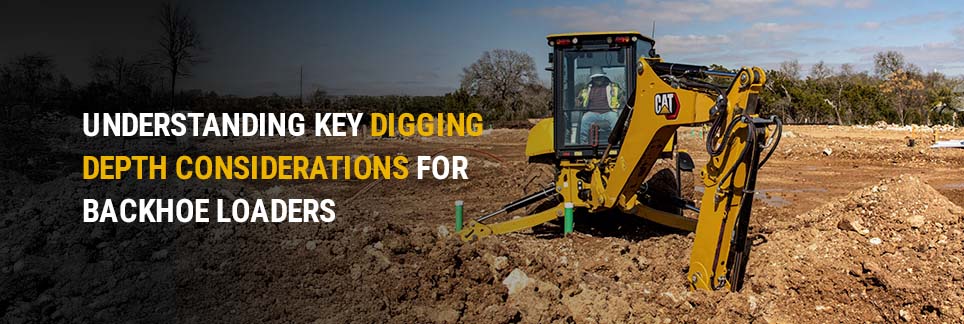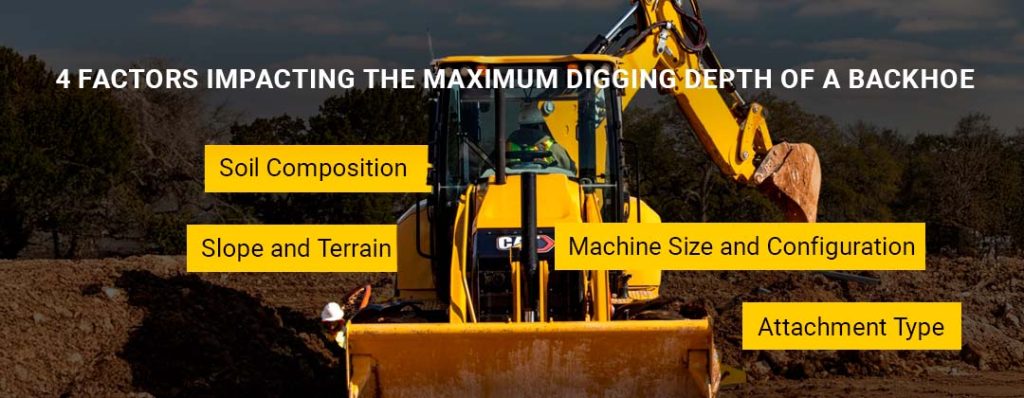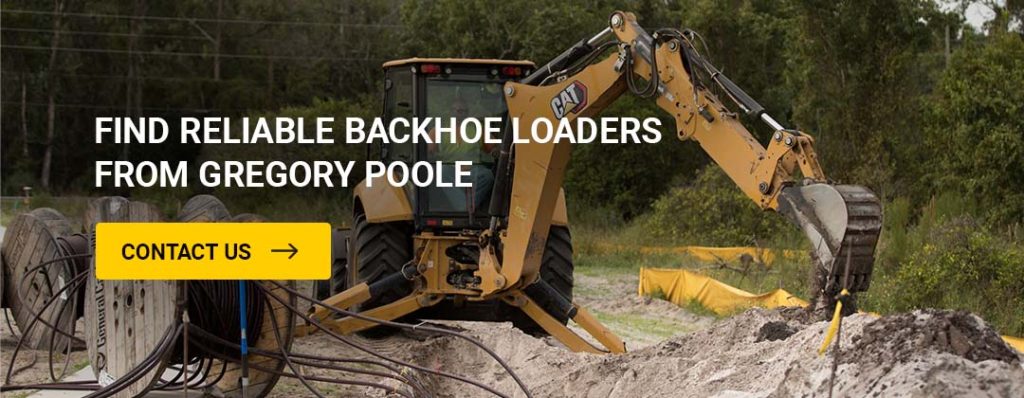
When you’re managing a construction project, every decision matters, including choosing the right equipment for the job. If you’re working under tight deadlines, dealing with challenging terrain or trying to meet specific trenching requirements, not knowing whether a machine will reach the depth you need can be frustrating. Selecting a backhoe loader without fully understanding its digging capabilities can lead to delays, safety issues and added costs.
Below, we explore the essential digging depth considerations for backhoe loaders so your team can confidently tackle digging applications and stay on schedule. With a deep understanding of construction project demands, Gregory Poole is here to help you find a backhoe loader that meets your requirements.
There are several critical specifications to help you determine whether a machine is suited to your project’s needs.
One of the most important specs to review is the backhoe loader digging depth. This is the deepest point the bucket can reach below ground level. It’s measured from the surface to the lowest vertical point the bucket teeth can reach while fully extended. This specification gives operators a baseline for what the machine is capable of in ideal conditions.
Most standard backhoe loaders offer digging depths of around 14 feet. For projects that require deeper excavation, machines equipped with an extendable dipper stick can reach deeper. It’s essential to distinguish between standard and extended depth when evaluating equipment, especially if your job involves deep utility lines or structural footings.
Reach refers to how far forward the bucket can extend horizontally from the machine when positioned at ground level. This is important for trenching along linear paths without constant repositioning.
This measures how high the bucket can lift material for dumping into trucks or onto spoil piles. A higher loading height can help improve productivity on large earthmoving jobs.
Dump clearance refers to the vertical distance between the bucket hinge pin and the ground when the bucket is fully dumped. It determines how easily the machine can release material into containers or trucks.
Digging force is the hydraulic power the backhoe applies when penetrating soil. It affects how easily the machine can break through compacted or rocky ground and is usually specified for the bucket and dipper arm.
Even when a machine is rated for certain applications, real-world factors can affect the backhoe’s digging depth.

The type of soil you’re working with significantly impacts backhoe digging depth. For example, softer soils like loam or sand allow easier penetration and smoother bucket movement. On the other hand, dense clay or rocky terrain can create more resistance, limiting how far the boom and bucket can reach downward.
Digging in hard-packed ground often requires slower, staged passes to avoid damaging the equipment or overloading the hydraulics. Wet soils can also reduce ground stability and require the operator to use shallower, safer cuts. This is why soil conditions should always be thoroughly evaluated before selecting your equipment or beginning a dig.
Flat terrain provides the most stable base for reaching maximum digging depth. On slopes or uneven ground, a backhoe’s stabilizers may not fully engage, reducing the machine’s ability to maintain balance while digging.
Operators may need to reposition frequently to maintain the safe angles and proper alignment. In addition, digging into a slope may require angling the boom differently to create stepped cuts, reducing total achievable depth from a single position.
The size of the backhoe has a direct impact on its digging capabilities. Compact backhoes are ideal for confined spaces, urban sites or small-scale landscaping tasks, but they typically max out at shallower depths.
Larger machines, designed for infrastructure and construction projects, are built with more extended booms and more powerful hydraulics, enabling them to reach deeper depths. If depth is a top priority, choosing a full-size backhoe loader with an extendable dipper stick can offer the most flexibility.
Attachments are also essential in limiting or enhancing digging depth. A few examples include:
In addition, using a narrower bucket can sometimes allow the machine to cut deeper trenches more effectively by focusing force in a smaller area. Always ensure the attachments are compatible with your machine’s capacity and performance expectations.
A compact backhoe may be sufficient for shallow trenching applications like small electrical lines or irrigation. However, utility and sewer installations often require deeper digging to comply with local regulations and frost line requirements.
Deeper foundation work or drainage basins may call for larger machines, especially when you’re working on commercial or infrastructure projects. If space for spoil piles is limited, you’ll need to consider the machine’s reach and dump height to ensure it can place material precisely where it needs to go.
On tighter sites, operators may need to make shorter, more frequent passes and reposition the machine often. On the other hand, open layouts allow for wider swing arcs and deeper reaches.
Planning based on these requirements helps prevent delays and can help protect worker safety and ensure that your chosen machine operates within its optimal performance range.
Having the right machine is just one part of the equation. How you set up and operate your backhoe can make a big difference in digging performance, safety and overall efficiency:

Every site brings its own set of challenges. From meeting depth requirements to handling unpredictable soil conditions, selecting the right backhoe loader isn’t always straightforward. This is where Gregory Poole Equipment Company comes in.
With over 70 years of experience serving construction professionals, we know how to match the right machine to the right job. Whether you’re buying new, renting or looking for expert product support, our team is here to help you dig smarter and safer.
Contact us today to learn how we can support your next project with dependable equipment.